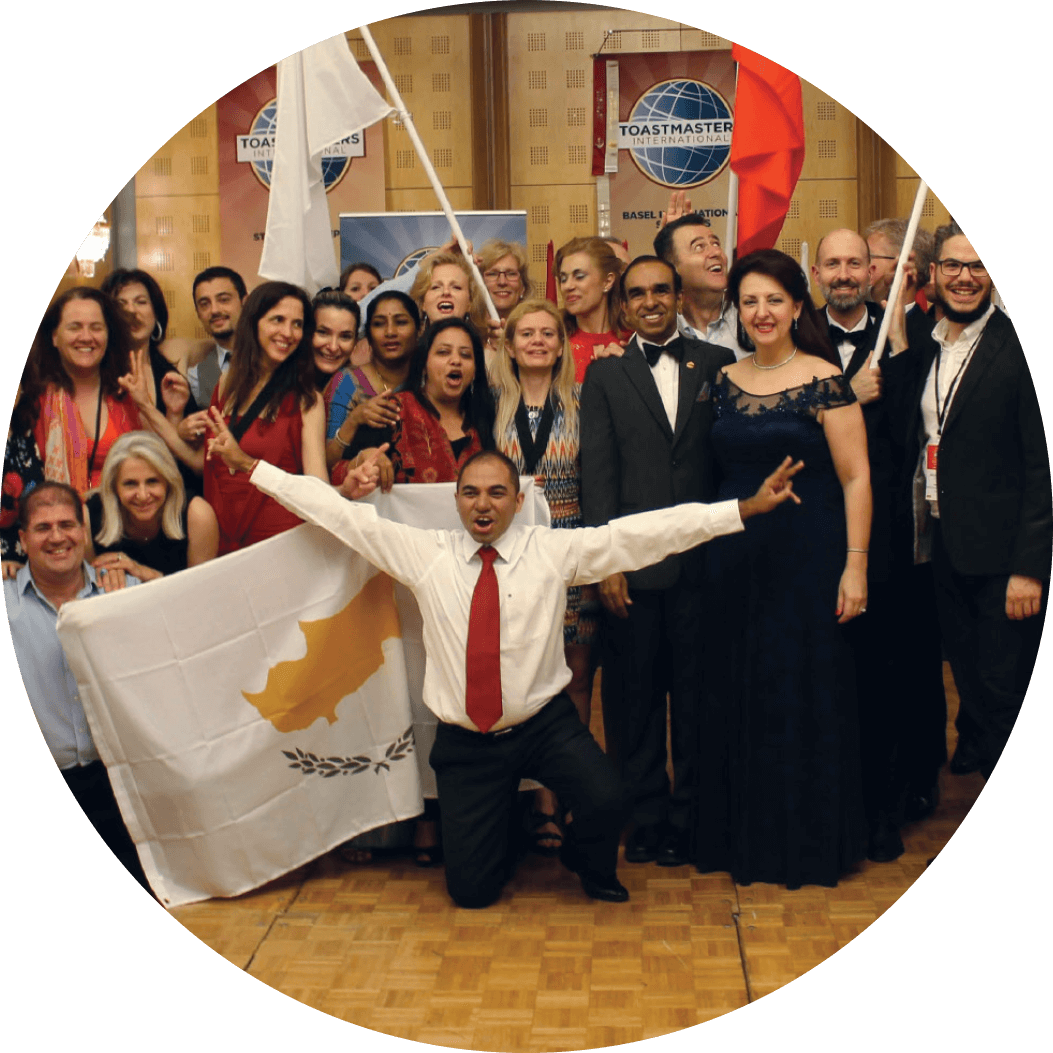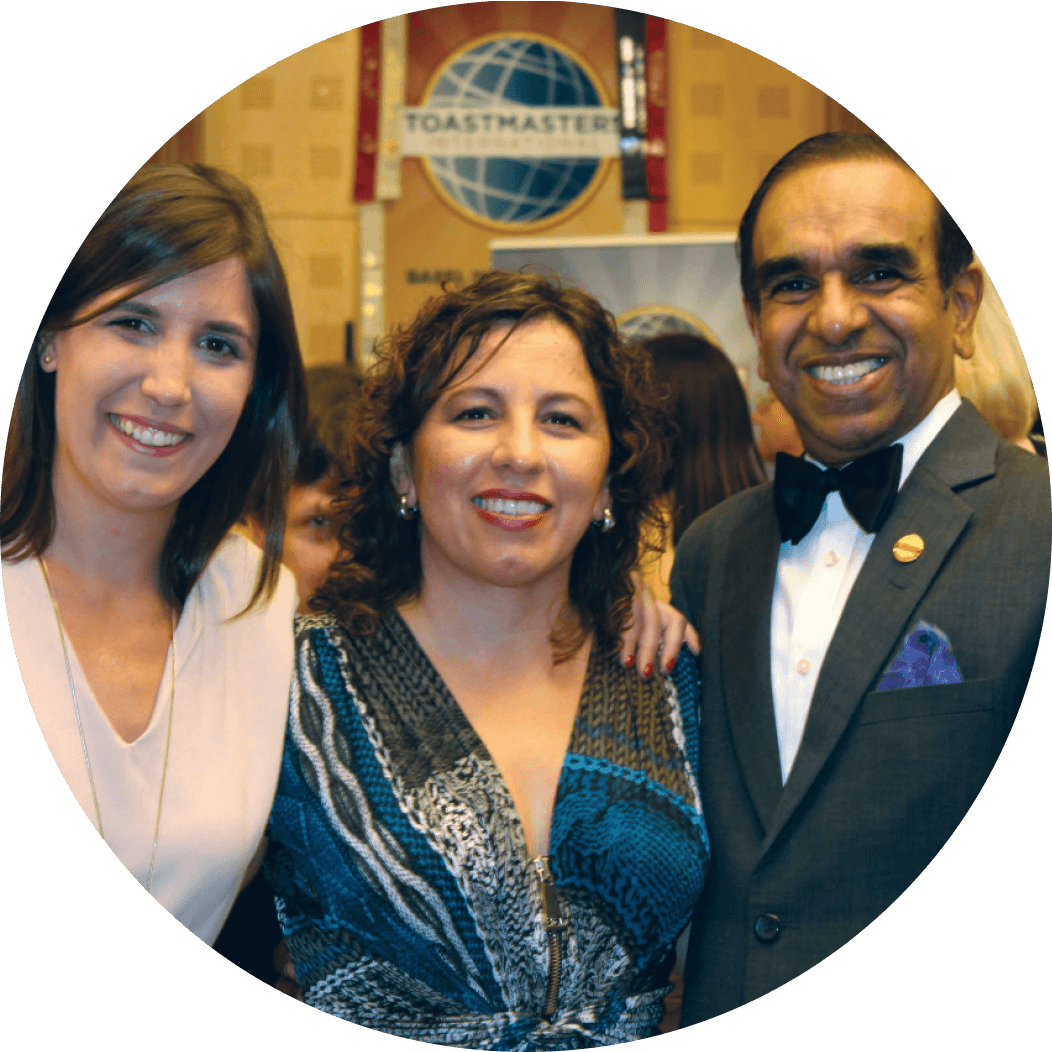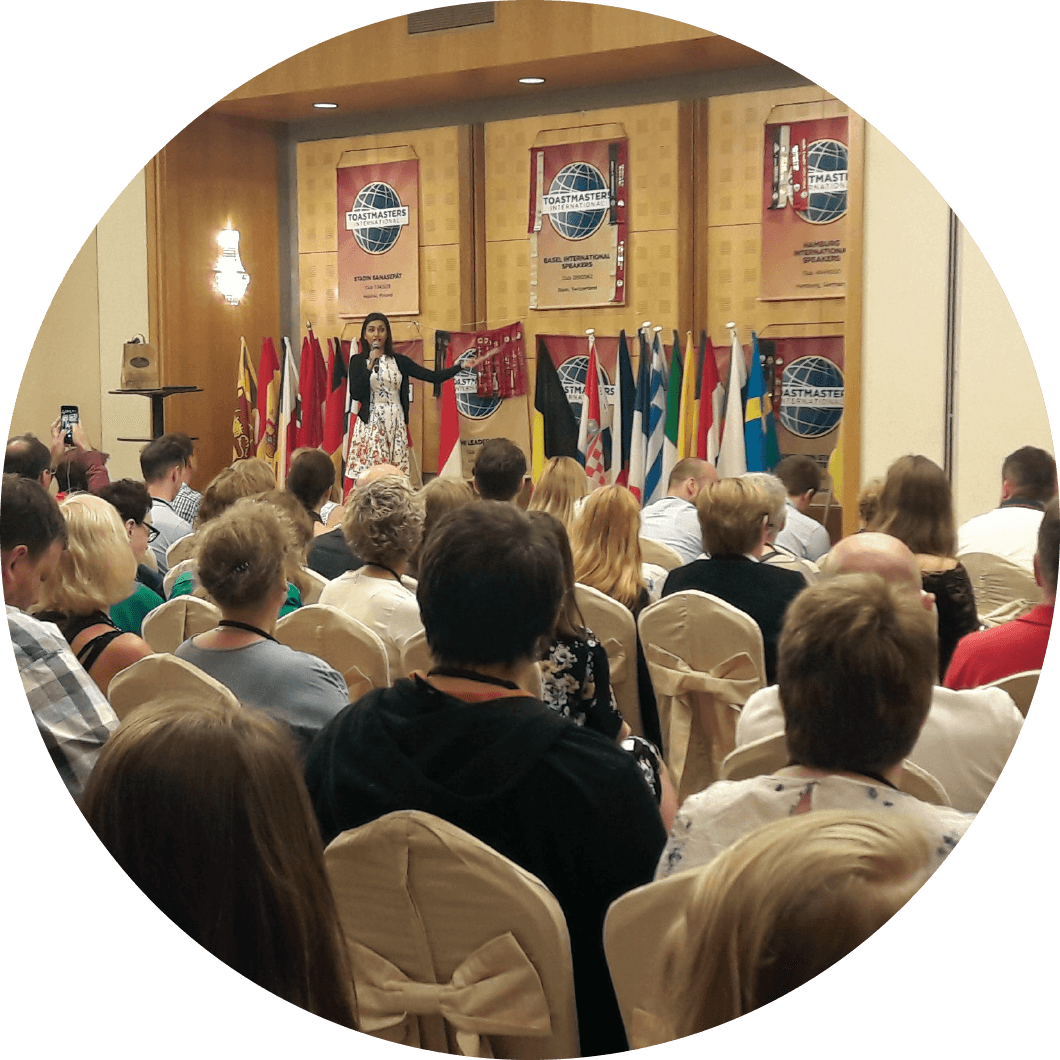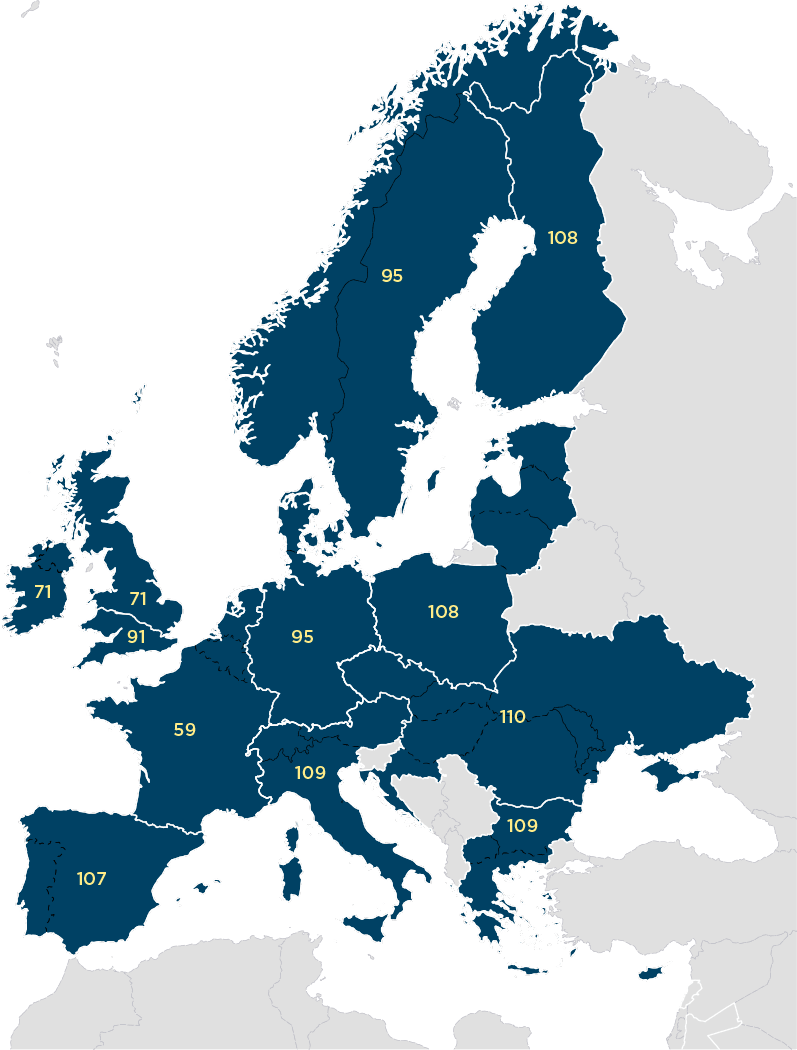Earlier this year, something special happened in Toastmasters. Due to unprecedented growth, Districts 59 and 95—two districts comprising 31 countries across Continental Europe—became six. It was only four years earlier that District 59 split into two, giving birth to District 95. The number 95 was selected intentionally for its mirrored digits — a way of representing the close connection between the two districts and the people within them.
District 59 itself was only founded in 2003. And it was a long road to that accomplishment.
A Slow Start
The first club to charter outside of North America was in Southport, England, in 1935. World War II would cause this club to close and delay any real growth of Toastmasters in Europe. After the war, clubs spread throughout Great Britain, only arriving in Ireland and Continental Europe in the 1950s.
Toastmasters’ presence grew in the United Kingdom and Ireland. It was slower in Continental Europe, where language, cultural and geopolitical issues served as barriers. As of 1956, Continental Europe had one Toastmasters club: Bossuet Gaveliers, which started in France and later moved to Luxembourg when its NATO-based host organization relocated. Twenty years later only nine clubs existed in Continental Europe. Some of the earliest clubs there were started on U.S. military bases or by U.S. military personnel.
“The clubs were partly started for improving skills and partly started for social events,” says 2005–2006 District 59 Director and current Region 10 Advisor Elizabeth Nostedt, DTM, from Gothenburg, Sweden.
In 1980, even with fewer than 10 clubs spread across the continent, a small group of ambitious and dedicated Toastmasters from the existing clubs formed the Continental Council of European Toastmasters (CCET). They understood the benefits of the education program and how it could help individuals and communities. The members wanted to host conferences, provide leadership training, hold contests and spread the word about Toastmasters throughout Europe.

The 10 CCET countries were Austria, Belgium, former Czechoslovakia, Denmark, France, Germany, Luxembourg, the Netherlands, Sweden and Switzerland. Some of the countries already had clubs; others did not but were located in between countries with clubs. “The expectations were to fill the holes and build new clubs where there weren’t any,” says Nostedt.
“The leaders spent their own time and paid their own expenses to connect to other Toastmasters in Europe who also had that burning desire to connect and help others succeed,” says Nostedt. “The first directories of clubs in the CCET were typewritten, copied and mailed out by regular post.”
In 1998–1999, then CCET Vice Chairman Robert Cockburn, DTM, visited each area during its contests to discuss the benefits of being a district with as many members as possible. Two-time CCET chairman and 2002–2004 International Director Cockburn now lives in Perth, Australia. He says, “In creating a district, as with any project, it is paramount to plan how to communicate the right messages to the leaders as well as to the general membership. Communication with our members was limited, which was one of the problems in being a territorial council, so it took us a long time to get all the clubs on board. Once we achieved critical mass and became a district, the benefits of the formal training and extra resources that belonging to a district provides took hold.”

The Birth of New Districts
With hard work and perseverance, the CCET grew its membership and club numbers. “In 1997–1998, CCET Chairman Christopher Magyar, DTM, chose ‘Make Like a District’ as a slogan to raise awareness that there was something else and that would be better than what we are now,” says Cockburn. The CCET became a provisional district in 2000 and then officially became District 59 in 2003 with 42 clubs. Two short years later District 59 had nearly tripled its clubs to 117. By 2010 that number almost doubled again to 207. Skip ahead just four years to 2014, and the district nearly doubled itself again with 407 clubs—adding about one club per week during this time.
After such rapid growth, the district became so large it had to be split into two, becoming districts 59 and 95. In 2015, just one year after the split, another district reformation planning process began.
Reasons for Growth
The following components are key contributors to the growth Europe is now experiencing.
Communication Skills
“Initially, people saw the value in developing skills in English,” says Morag Mathieson, DTM, from Moehrendorf, Germany. Mathieson is currently international director for Region 11 and was the driving force behind the creation of four new districts in Europe.
Odile Petillot, DTM, from Paris, France, who served as District 59 Governor in 2004–2005, says when new countries joined the district, such as Portugal and Poland, their citizens were eager to improve their English communication skills, so they joined Toastmasters. “They were relatively new in the European Union and wanted to be ‘visible,’” says Petillot. “The best way to do so was for them to improve their communication in English, which is the common language in Europe.” When the Baltic countries joined then-districts 59 and 95, their citizens followed suit. As a result, the number of clubs grew quickly.
The new countries also brought something else. “The incorporation of the countries in the eastern part of continental Europe—like Poland, Hungary and Romania, to name a few—have given fresh blood, energy and creativity to the western part,” says 2014–2015 District 95 Director and current Region 14 Advisor Kees Broos, DTM, who now splits his time between Europe and New Zealand.
“All around you, people are going through huge transformations as leaders and individuals.”
— Morag Mathieson, DTMBroos experienced that creativity on a trip to Poland for a Toastmasters Leadership Institute. “The first eye-opener was that I should make myself available for the whole weekend, in comparison to the half day of training I was accustomed to,” he says. There was dinner and a party on Friday night with more than 80 members, a full day of training and networking activities with more than 350 members on Saturday, and a half day of programming on Sunday. “This event has now been successfully copied in other parts of the districts in Continental Europe,” says Broos.
Learning English is still a motivator for many people. Pathways materials are available in eight languages other than English—including French, German, Portuguese and Spanish—and more translations are coming. As a result, native-language clubs are growing throughout Europe.
Leadership Skills
From the days of CCET to today, leaders have consistently emphasized training. Nostedt says that, even early on when there was a need to focus on building clubs, the CCET and district leaders also emphasized preparing officers to ensure clubs were effective and well-functioning. She describes the philosophy as, “Build them and train them. If the leaders are there, people will come.”
In addition, members value the opportunity to gain intercultural leadership experience. Mathieson says members look at officer roles as opportunities, rather than simply work to do. “All around you, people are going through huge transformations as leaders and individuals. You see the potential of what can happen,” she says. “For example, serving as a district director gives a whole year to be a CEO at a culturally diverse organization.”
Friendships
In addition to skills, people build community through Toastmasters. Sabyasachi Sengupta, ACB, ALB, of Utrecht Toastmasters in Utrecht, Netherlands, joined because of what he calls “the expat factor.” He found Toastmasters to be a place where he could learn and make friends at the same time.
Inspired by the founding mission of the first clubs in Continental Europe, there is a long history of incorporating a strong social element into the Toastmasters experience. Utrecht Toastmasters meets on Fridays, and Sengupta says members often stay after the end of the meeting to get to know each other better and develop relationships. They also go on trips and attend district conferences together.
As a result, Sengupta describes a rare combination of “the friendship and the feedback.” He says, “The feedback is not sugar-coated. But because people know each other so well, they can be very candid with each other in a supportive way, and people are open.”
That same camaraderie can be found at area, division and district conferences and trainings throughout Continental Europe. Social activities are planned during and around those events too.
Modern Relevance
Technology has also fostered the growth of Toastmasters in Europe. Social media makes it easy to spread the word about the Toastmasters experience. With the advent of TEDx and YouTube, audience expectations have changed and inspired a cultural shift. In the past, cultural norms throughout much of Western Europe emphasized subject-matter expertise and content above public speaking prowess. “I have heard great scientists and researchers who were awful at delivery, but nobody seemed to care then,” says Petillot. Now professionals are looking to improve their presentation skills. Bea Bincze, DTM, 2018–2019 District 110 director from Budapest, Hungary, says, “Schools in Europe don’t offer public speaking training, and Toastmasters fills the need.”
Reformation Committee Member and 2018–2019 District 108 Director Piotr Chimko, DTM, from Łódź, Poland, says Toastmasters is a good alternative for the younger generation. “People in their 20s and 30s find it an affordable method to learn something that will help them build or develop their professional careers,” Chimko says.
The Toastmasters program not only improves people’s skills but also builds their confidence and career potential. “This feedback culture and supportive environment is essential for working with the young generation,” Bincze says.
District Activities
The location of the district leadership also makes a difference. “The speed of growth is completely interlinked to the enthusiasm of the district leaders to tap in to the potential and come up with the right marketing strategies,” says Broos. A growth spurt in Portugal occurred while the District 59 director at the time was Portuguese. Chimko, the 2018–2019 District 108 director, is from Poland, which is also experiencing tremendous growth.
The country hosting the district conference can also see a boost in membership. When members join Toastmasters, they typically focus only on skill development activities within the club. Many are unaware of the Toastmasters structure beyond the club—such as areas, divisions and districts—and the corresponding public speaking and leadership opportunities at those levels. “The district conference showcases how much more beyond the club people can grow,” says Bincze. Budapest, Hungary, was the site of the 2013 district conference, and the country has gone from two clubs in 2011 to 20 as of this year. Poland hosted the 2014 conference, which has also contributed to the district’s growth.
District conferences are fun learning opportunities. When Sengupta attended his first conference, he didn’t know what to expect. He found people who were friendly and willing to help one another. Now he regularly attends and always leaves full of energy: “Anyone who has interacted with me weeks after the conference knows about it. Everyone who attends the district conference feels energized.”

Continental Europe Today
That energy multiplied this year when Districts 59 and 95 assembled to usher in a new Toastmasters landscape across Europe. Approximately 850 people from at least 37 countries attended the Rebirth in Athens conference this past May, including 2017–2018 International President Balraj Arunasalam, DTM. With the conference vote making it official, six districts emerged from the original two. As of July 1, 2018, districts 59, 95, 107, 108, 109 and 110 comprise 34 countries and principalities across Continental Europe.
Led by Mathieson, the reformation was the result of years of work and went smoothly. “This was mainly due to the extensive consultation program put in place by the reformation committee,” says Broos. “We did have the benefit of having gone through a split a couple years earlier and learning from that experience.”
“Reformation can take a lot out of a district,” says Mathieson. “There’s lots of leadership and time required. It can also be emotional for members who are sad to be separated from other clubs and friends, especially those who work at the district level.”
As a result, the conference was more than just a joint meeting; it felt like a family reunion. “There’s such a joie de vivre with Toastmasters across Europe,” says Nostedt. “I can call up a Toastmaster I met and say I’ll be in that person’s city, and I know there will be an invitation to get together.” That feeling of camaraderie is so strong that the six districts are trying to schedule their conferences at different times so people from other districts can attend.
Today almost 600 clubs thrive in Continental Europe—and counting. The district leaders believe the growth trajectory will continue for years. “Europe is unchartered territory,” says Bincze. “We are just at the beginning of the journey.”
Jennifer L Blanck, DTM has more than 25 years of career development and advising experience. She is a member of 5-Star Toastmasters Club in Arlington, Virginia, and AAMC Toastmasters in Washington, D.C., as well as a regular contributor to the Toastmaster magazine. Learn more at jenniferlblanck.com




 EUROPEAN DISTRICTS TODAY
EUROPEAN DISTRICTS TODAY

